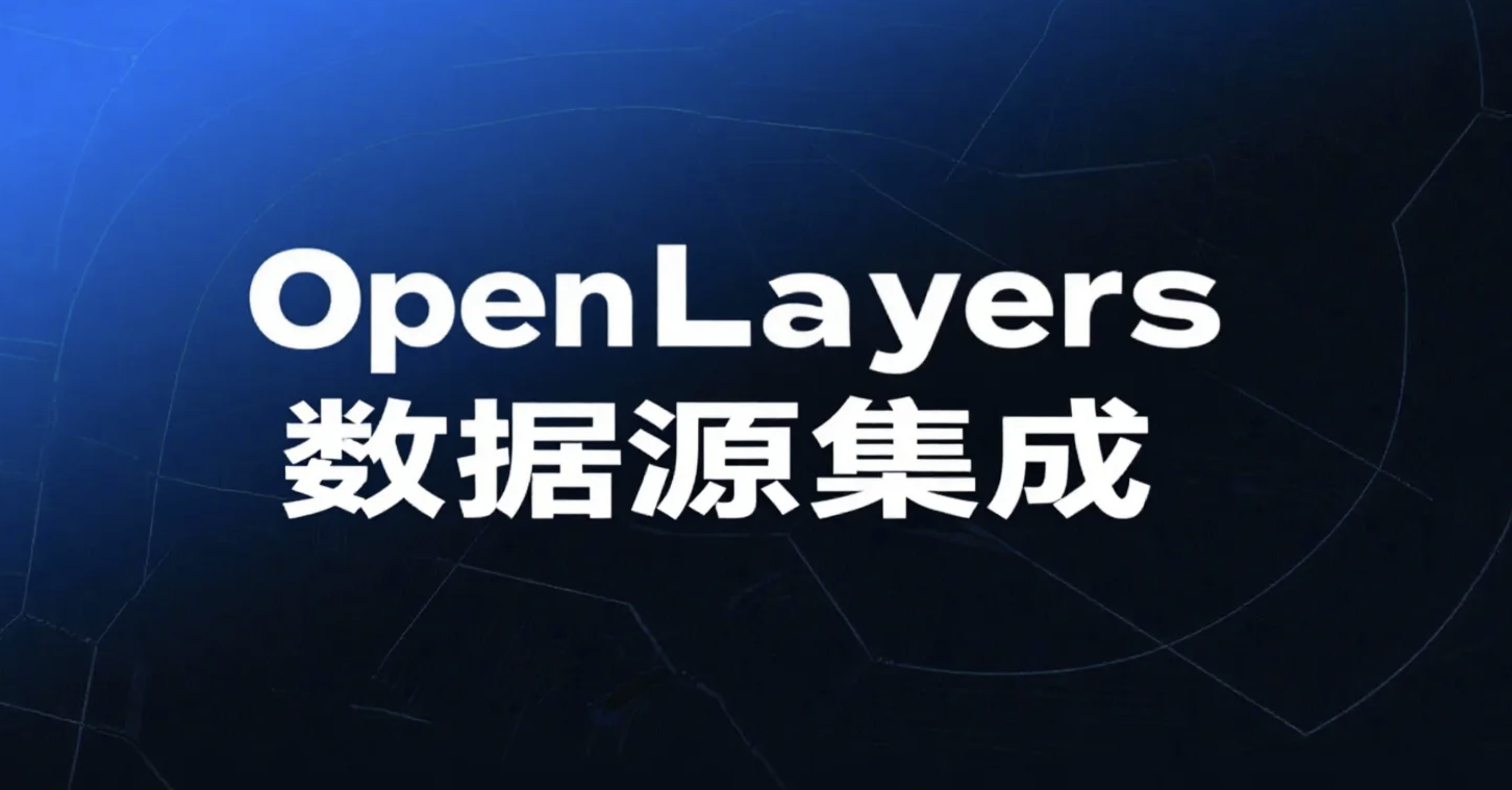OpenLayers数据源集成 -- 章节四:矢量格式图层详解
前言
在前面的文章中,我们学习了OpenLayers的矢量要素图层(VectorFeatureLayer)技术。本文将深入探讨OpenLayers中的矢量格式图层(VectorFormatLayer)功能,这是WebGIS开发中处理远程矢量数据、实现动态加载和交互式显示的核心技术。矢量格式图层能够从远程URL加载GeoJSON数据,支持要素高亮显示、鼠标悬停效果和点击交互功能。通过一个完整的示例,我们将详细解析从远程数据加载到交互式展示的完整流程。
项目结构分析
模板结构
<template><!--地图挂载dom--><div id="map"><div id="info" ref="info"> </div></div>
</template>模板结构详解:
- 地图容器: id="map" 作为地图的唯一挂载点
- 信息显示区域: id="info" ref="info" 用于显示要素信息
- 响应式引用: 使用Vue的ref机制获取DOM元素引用
- 初始内容: 非断行空格,确保容器有初始高度
依赖引入详解
import GeoJSON from 'ol/format/GeoJSON';
import Map from 'ol/Map';
import VectorImageLayer from 'ol/layer/VectorImage';
import VectorLayer from 'ol/layer/Vector';
import VectorSource from 'ol/source/Vector';
import View from 'ol/View';
import {Fill, Stroke, Style, Text} from 'ol/style';依赖说明:
- GeoJSON: GeoJSON格式解析器,用于读取和解析远程GeoJSON数据
- Map: OpenLayers的核心地图类
- VectorImageLayer: 矢量图像图层,用于高性能渲染大量矢量数据
- VectorLayer: 标准矢量图层,用于高亮显示和交互
- VectorSource: 矢量数据源,支持URL远程加载
- View: 地图视图类,控制显示范围和投影
- Fill, Stroke, Style, Text: 样式相关类,用于配置要素外观和文本显示
样式配置详解
1. 全局样式定义
const style = new Style({fill: new Fill({color: 'rgba(255, 255, 255, 0.6)',}),stroke: new Stroke({color: '#319FD3',width: 1,}),text: new Text(),
});样式配置详解:
Fill填充样式
- color: 'rgba(255, 255, 255, 0.6)' 白色半透明填充
- RGB值: (255, 255, 255) 白色
- 透明度: 0.6 (60%不透明度)
- 用途: 为面要素提供背景填充
Stroke边框样式
- color: '#319FD3' 蓝色边框(十六进制颜色值)
- width: 1 边框宽度1像素
- 用途: 为线要素和面要素提供边框
Text文本样式
- Text(): 创建文本样式对象
- 动态设置: 通过 setText() 方法动态设置文本内容
- 用途: 显示要素的名称或属性信息
2. 高亮样式配置
style: new Style({stroke: new Stroke({color: '#f00',width: 1,}),fill: new Fill({color: 'rgba(255,0,0,0.1)',}),
})高亮样式详解:
- stroke: 红色边框 '#f00' (简写形式)
- fill: 红色半透明填充 'rgba(255,0,0,0.1)'
- 用途: 鼠标悬停或点击时的要素高亮效果
变量声明与初始化
let highlight, featureOverlay;变量说明:
- highlight: 存储当前高亮的要素对象
- featureOverlay: 高亮图层的引用
- 作用域: 使用let声明,在组件内部共享使用
地图初始化详解
1. 主地图配置
this.map = new Map({target: 'map',layers: [new VectorImageLayer({imageRatio: 2,source: new VectorSource({url: 'https://geo.datav.aliyun.com/areas_v3/bound/100000_full.json',format: new GeoJSON(),}),style: function (feature) {style.getText().setText(feature.get('name'));return style;},}),],view: new View({center: [113.24981689453125, 23.126468438108688],projection: "EPSG:4326",zoom: 4})
});配置详解:
VectorImageLayer矢量图像图层
- imageRatio: 2 图像比例,提高渲染质量
- 优势: 相比VectorLayer,VectorImageLayer在处理大量数据时性能更好
- 适用场景: 静态显示、大数据量渲染
VectorSource数据源配置
- url: 远程GeoJSON数据地址
- 数据来源: 阿里云DataV地理数据服务
- 数据内容: 中国行政区划边界数据
- 数据格式: GeoJSON标准格式
- format: new GeoJSON() 指定数据解析格式
动态样式函数
style: function (feature) {style.getText().setText(feature.get('name'));return style;
}- 功能: 为每个要素动态设置文本标签
- 实现: 通过 feature.get('name') 获取要素名称
- 显示: 在地图上显示行政区划名称
View视图配置
- center: [113.24981689453125, 23.126468438108688] 地图中心点
- 经度: 113.25° (约东经113度)
- 纬度: 23.13° (约北纬23度)
- 地理位置: 中国广东省广州市附近
- projection: "EPSG:4326" 使用WGS84地理坐标系
- zoom: 4 缩放级别,适合显示全国范围
2. 高亮图层配置
featureOverlay = new VectorLayer({source: new VectorSource(),map: this.map,style: new Style({stroke: new Stroke({color: '#f00',width: 1,}),fill: new Fill({color: 'rgba(255,0,0,0.1)',}),}),
});高亮图层详解:
- VectorLayer: 使用标准矢量图层,支持动态要素管理
- source: 空的VectorSource,用于动态添加高亮要素
- map: 直接指定地图实例,自动添加到地图
- style: 红色高亮样式,用于突出显示选中的要素
事件监听机制
1. 鼠标移动事件
this.map.on('pointermove', (evt) => {if (!evt.dragging) {this.displayFeatureInfo(evt.pixel);}
});事件详解:
- pointermove: 鼠标移动事件
- evt.dragging: 检查是否正在拖拽地图
- 条件判断: 只有在非拖拽状态下才触发要素信息显示
- evt.pixel: 获取鼠标位置的像素坐标
2. 点击事件
this.map.on('click', (evt) => {this.displayFeatureInfo(evt.pixel);
});事件详解:
- click: 地图点击事件
- 功能: 点击时显示要素信息并高亮显示
- evt.pixel: 获取点击位置的像素坐标
核心方法详解
displayFeatureInfo方法
displayFeatureInfo(pixel) {this.map.getLayers().item(0).getFeatures(pixel).then((features) => {const feature = features.length > 0 ? features[0] : undefined;const info = this.$refs.info;if (feature) {info.innerHTML = feature.get('name');} else {info.innerHTML = ' ';}if (feature !== highlight) {if (highlight) {featureOverlay.getSource().removeFeature(highlight);}if (feature) {featureOverlay.getSource().addFeature(feature);}highlight = feature;}});
}方法详解:
第一步:获取图层和要素
this.map.getLayers().item(0).getFeatures(pixel)- getLayers(): 获取地图的所有图层
- item(0): 获取第一个图层(VectorImageLayer)
- getFeatures(pixel): 根据像素坐标获取该位置的要素
- 返回: Promise对象,异步获取要素数组
第二步:处理要素信息
const feature = features.length > 0 ? features[0] : undefined;
const info = this.$refs.info;
if (feature) {info.innerHTML = feature.get('name');
} else {info.innerHTML = ' ';
}- 要素选择: 取第一个要素(如果有多个重叠要素)
- DOM操作: 通过Vue的ref获取信息显示元素
- 信息显示: 显示要素名称或清空显示区域
第三步:高亮状态管理
if (feature !== highlight) {if (highlight) {featureOverlay.getSource().removeFeature(highlight);}if (feature) {featureOverlay.getSource().addFeature(feature);}highlight = feature;
}核心API方法总结
VectorImageLayer对象方法
| 方法 | 功能 | 参数 | 返回值 | 示例 |
|---|---|---|---|---|
| getFeatures(pixel) | 获取指定像素位置的要素 | Pixel | Promise<Feature[]> | layer.getFeatures(pixel) |
| getSource() | 获取数据源 | - | VectorSource | layer.getSource() |
| setSource(source) | 设置数据源 | VectorSource | - | layer.setSource(source) |
| setStyle(style) | 设置样式 | Style/Function | - | layer.setStyle(styleFunc) |
| getStyle() | 获取样式 | - | Style/Function | layer.getStyle() |
VectorSource对象方法
| 方法 | 功能 | 参数 | 返回值 | 示例 |
|---|---|---|---|---|
| addFeature(feature) | 添加单个要素 | Feature | - | source.addFeature(feature) |
| removeFeature(feature) | 移除要素 | Feature | - | source.removeFeature(feature) |
| clear() | 清空所有要素 | - | - | source.clear() |
| getFeatures() | 获取所有要素 | - | Feature[] | source.getFeatures() |
Map对象方法
| 方法 | 功能 | 参数 | 返回值 | 示例 |
|---|---|---|---|---|
| getLayers() | 获取图层集合 | - | Collection | map.getLayers() |
| on(event, handler) | 添加事件监听 | String, Function | - | map.on('click', handler) |
| un(event, handler) | 移除事件监听 | String, Function | - | map.un('click', handler) |
实际应用扩展
1. 多要素信息显示
// 显示多个重叠要素的信息
displayMultipleFeatures(pixel) {this.map.getLayers().item(0).getFeatures(pixel).then((features) => {const info = this.$refs.info;if (features.length > 0) {const featureNames = features.map(f => f.get('name')).join(', ');info.innerHTML = `选中要素: ${featureNames}`;} else {info.innerHTML = ' ';}});
}2. 要素属性面板
// 显示详细的要素属性信息
displayFeatureDetails(feature) {const properties = feature.getProperties();const info = this.$refs.info;let html = '<div class="feature-info">';html += `<h3>${properties.name || '未命名要素'}</h3>`;html += '<ul>';Object.keys(properties).forEach(key => {if (key !== 'geometry') {html += `<li><strong>${key}:</strong> ${properties[key]}</li>`;}});html += '</ul></div>';info.innerHTML = html;
}3. 要素搜索功能
// 根据名称搜索要素
searchFeatureByName(name) {const layer = this.map.getLayers().item(0);const source = layer.getSource();const features = source.getFeatures();const foundFeature = features.find(feature => {return feature.get('name').toLowerCase().includes(name.toLowerCase());});if (foundFeature) {// 缩放到要素位置const extent = foundFeature.getGeometry().getExtent();this.map.getView().fit(extent, { padding: [50, 50, 50, 50] });// 高亮显示this.highlightFeature(foundFeature);}
}4. 要素统计功能
// 统计要素数量和信息
getFeatureStatistics() {const layer = this.map.getLayers().item(0);const source = layer.getSource();const features = source.getFeatures();const stats = {total: features.length,byType: {},byName: {}};features.forEach(feature => {const name = feature.get('name');const type = feature.getGeometry().getType();stats.byType[type] = (stats.byType[type] || 0) + 1;stats.byName[name] = (stats.byName[name] || 0) + 1;});return stats;
}5. 要素导出功能
// 导出选中的要素为GeoJSON
exportSelectedFeatures() {const geoJSON = new GeoJSON();const features = featureOverlay.getSource().getFeatures();const geojsonData = geoJSON.writeFeatures(features);const blob = new Blob([geojsonData], { type: 'application/json' });const url = URL.createObjectURL(blob);const a = document.createElement('a');a.href = url;a.download = 'selected_features.json';a.click();URL.revokeObjectURL(url);
}性能优化策略
1. 防抖优化
// 使用防抖优化鼠标移动事件
let debounceTimer;
const debouncedDisplayFeatureInfo = (pixel) => {clearTimeout(debounceTimer);debounceTimer = setTimeout(() => {this.displayFeatureInfo(pixel);}, 100);
};// 在事件监听中使用防抖函数
this.map.on('pointermove', (evt) => {if (!evt.dragging) {debouncedDisplayFeatureInfo(evt.pixel);}
});2. 要素缓存
// 缓存要素信息,避免重复查询
const featureCache = new Map();const getCachedFeature = (pixel) => {const key = `${pixel[0]},${pixel[1]}`;if (featureCache.has(key)) {return featureCache.get(key);}return this.map.getLayers().item(0).getFeatures(pixel).then(features => {featureCache.set(key, features);return features;});
};3. 图层优化
// 根据缩放级别动态调整图层显示
const view = this.map.getView();
view.on('change:resolution', () => {const resolution = view.getResolution();const layer = this.map.getLayers().item(0);if (resolution > 1000) {// 低分辨率时隐藏文本标签layer.setStyle(feature => {const style = new Style({fill: new Fill({ color: 'rgba(255, 255, 255, 0.6)' }),stroke: new Stroke({ color: '#319FD3', width: 1 })});return style;});} else {// 高分辨率时显示文本标签layer.setStyle(feature => {style.getText().setText(feature.get('name'));return style;});}
});总结
本文详细介绍了OpenLayers中矢量格式图层的使用方法,主要知识点包括:
- VectorImageLayer: 高性能矢量图像图层的创建和配置
- 远程数据加载: 从URL加载GeoJSON数据的完整流程
- 动态样式配置: 基于要素属性的动态样式设置
- 交互功能: 鼠标悬停、点击事件和高亮显示
- 要素查询: 基于像素坐标的要素查询和获取
- 性能优化: 防抖、缓存、图层优化等策略
通过 VectorImageLayer 和远程数据源的组合使用,我们可以高效地加载和显示大量矢量数据。矢量格式图层特别适用于需要显示行政区划、边界数据等大规模矢量要素的场景,支持丰富的交互功能和动态样式配置。
在实际项目中,建议合理配置数据源URL,注意跨域问题处理,优化交互性能,并实现完善的错误处理机制,以提供稳定、高效、用户友好的地图服务体验。这种技术为构建交互式WebGIS应用提供了强大的基础支撑。

